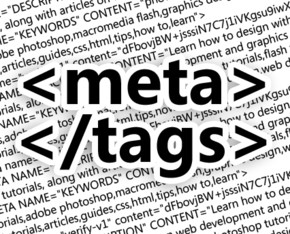While most online marketers have heard about Meta tags, you can be sure that a majority has absolutely no clue about something that website administrators and search engine optimizers get all heated up about. Data, both structured and Meta is vital to the process of click rate improvement from the search results in which your site already figures.
It is not such a big deal if you really care to think about it. It is just another way of search result optimization so that the eye of the web-searcher is drawn to your site because it is more visually appealing, and rich in data. The rich snippets, as they are referred to, can be often the vital edge required that will get a web surfer clicking on your site instead of passing it over. Given the competition for eyeballs is so high on the Internet, you can hardly afford to ignore its importance.
The Invisible Assistant
Meta tags that describe the content of a page are not visible to the reader of the page; they only exist in the page’s HTML code and assist the search engines to figure out the nature of a webpage. The metadata is usually placed at the page’s head to enable the search engines easily find them. An easy way of finding out if a page has any metadata is to use the right click of the mouse anywhere on the webpage and chose the option “View Page Source”. If you are using Firefox, a pop-up window will open, whereas in Chrome, a new tab will display lines of code of which the head will contain the metadata.
Major Types of Meta tags
As any search engine optimization training course will point out, there are only four major types of classification of Meta tags. While some are not so important now, others are still worthwhile for using to build website visibility and increasing traffic. A succession of keywords that you have deemed to be relevant to the webpage is referred to as Meta keywords attribute. Regretfully the importance of this type of metadata has declined as it was overused and manipulated by site administrators and so Google now pays no attention to it.
The text seen at the browser top is called the Title Tag, and search engines interpret this as the page title. For search rankings Title Tags are considered to be extremely important. The Meta Description Attribute explains what the page is all about and thus is regarded as being useful to the search engine. It is not necessary for the Meta Description Attribute tag to be revealed in the Google search results as it is common for Google to pick up from the page a snippet, but it is in many other ways quite useful.
Controlling Your Page Visibility
While Google says that Meta description keywords have no role to play in the SERP rankings, a Meta description tag that is compelling could lure searchers to click to your site from the search engine results page. This happens particularly if the keywords being searched for are included in the description.
Use of the Meta Robots Attribute is a way of instructing the search engine what they should do with the page. The index/noindex attribute tells the search engine whether it should display the page in the results or not, while follow/nofollow attribute instructs the search engine to follow the provided links or not. Those who might be wondering why anybody should instruct search engines not to index or follow certain pages, these instructions are really helpful when new pages are being developed and they aren’t ready as yet, or contain content that is either old or duplicate. Maintaining control over the indexation can lead to an improved SEO for your website.
Author bio: Reese Emerson is a SEO veteran, having worked in the industry from the very early days of the Internet. He devotes his energies mostly to teaching web marketing and imparting search engine optimization training to online entrepreneurs.

